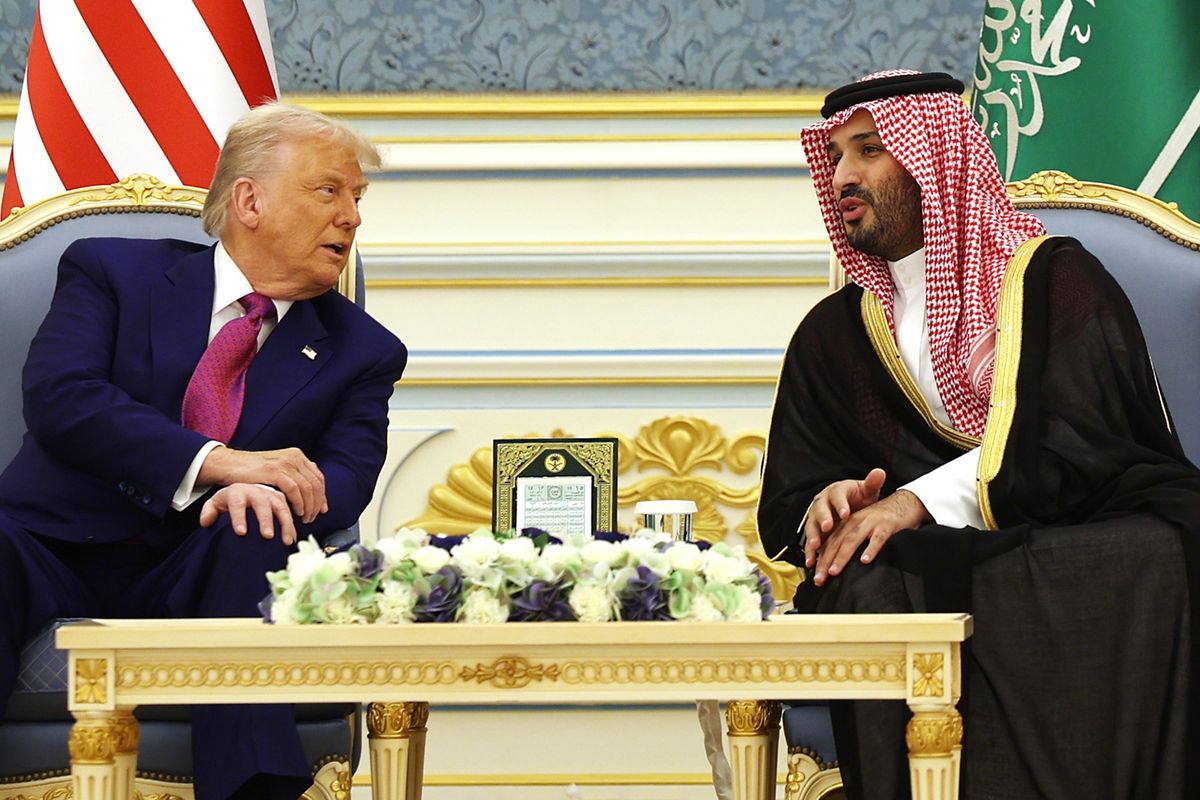There is little doubt that Putin’s foreign policy centers on reviving Russia as a major international power, which seeks to undermine the global American alliance that has underwritten international security since the end of the Cold War.
Stretching across Europe, Asia and the Middle East, this alliance has continually thwarted Russia’s primary foreign policy ambitions. Seeking to break Russia free from America’s preeminence, Putin persistently employs tactics below the threshold of war to fracture the global system and artfully exploits the unintended consequences this inevitably creates.
Putin’s asymmetrical moves have sought to cast doubt on the credibility of American security guarantees in Eastern Europe and in the Baltic. And while alarm bells have sounded, Putin has shied away from direct military confrontation with NATO.
Putin has also now turned to a second front by exploiting the void left by U.S. retrenchment from the Middle East. The projection of Russian military power in Syria in the summer of 2015 ushered in a new era of expansion in the Arab world – particularly through arm sales and limited military involvement. In Moscow’s view, the Middle East is ripe for disruption, with lower risks of a direct confrontation with the United States.
Putin’s show of force unsurprisingly has found him new friends and new buyers. Regional powers are hedging against U.S. unpredictability and seeking out Russian benevolence. Furthering the sense of uncertainty is the lingering crisis between the Gulf Cooperation Council states and Qatar. While the Gulf sees uncertainty, Russia sees an opportunity to prey on their doubts.
The announced sale of the S-400 missile defense system to Riyadh during the October visit of King Salman to Moscow, the first Saudi monarch to visit Russia, is a further sign of the deepening role Moscow is playing in an area of the world where the U.S. has traditionally been predominant.
This is not the first time Putin has ventured into arm sales in the Middle East, a region that is typically dominated by the U.S. weapons industry. Previous sales of the S-300 have been delivered to Iran, while Turkey recently signed a deal with Moscow to acquire the S-400 as well. Furthermore, Bahrain and Qatar, the home to the U.S.’s Fifth Fleet and the Al Udeid military base respectively, have also expressed interest in acquiring the system, according to Russian media. Its acquisition, if completed, raises important implications for the U.S.’s strategic posture in the Gulf. The proliferation of such systems is certainly not in America’s interest.
The S-400 is one of the most effective air defense systems in the world. As seen by its deployment in Syria, Moscow deliberately demonstrated its ability to establish and maintain control over large swaths of territory far from Russia’s borders and to effectively impede U.S. and Israeli military action in Syria. The Russian air defense systems (S-300 and S-400) can also be complemented by high-end conventional strike capabilities, like Iskanders based in Syria, to deter conventional threats.
The acquisition of the S-400 by Riyadh comes after the U.S. recently sold $15 billion worth of THAAD equipment to the Kingdom. This system will be the premier ballistic missile defense system in the Middle East, with the exception of Israel’s. But for its new air defense system, Saudi Arabia felt the need to turn to Russia.
Riyadh’s rapprochement with Moscow is a way to hedge against a more uncertain U.S. engagement and to gain some leverage in its relationship with Washington. While the U.S. has tried to assuage Saudi concerns about its own steadfastness in the region, Moscow has been able to sow enough doubt in Riyadh to undermine American efforts. Riyadh is careful to show that it won’t completely fall in line either with Washington or Moscow but will try to balance one relationship with the other. While the agreement to purchase the S-400 is a signal towards Washington, it is equally telling that the sale of the THAAD missile defense system was approved amidst Salman’s visit to Moscow.
However, the Syrian intervention brought Moscow into an uneasy alliance with Iran, which carried risks of mutual dependency and alienation from Sunni powers, such as Saudi Arabia. Moscow is, accordingly, happy to avoid falling too much in line with Teheran’s and Shia interests in the region. By strengthening ties with Riyadh, Moscow is able to improve its own position vis-à-vis Teheran and to expand its influence towards traditional U.S. allies.
The S-400 deal is thus one more step towards redefining the regional alliance system and balance of power in the Middle East in Russia’s favor. In the long run, the proliferation of such interdiction capabilities could pose challenges to Western powers’ ability to operate unhindered in the Persian Gulf, as is already the case in Syria. The interoperability and intelligence concerns of operating Russian systems alongside U.S. systems must also be addressed. With military ties to both Iran and Saudi Arabia, Russia is positioning itself to become the balancing power of the world’s most disputed region.
But this doesn’t have to be the case. The deal lays bare the limits of U.S. strategy in assuaging individual Gulf States while lacking a coherent regional strategy. There is little more the Trump administration can do on the bilateral level to reassure its Sunni allies that the United States is a key partner. The doubts which Gulf actors are responding to is from a broader U.S. retrenchment from the region as a whole.
If the U.S. is to truly check Russia from becoming a power broker in the Middle East, reassurance at a regional level – not retreat, is needed. A good place to start is Syria, where a credible U.S. effort to push back Iranian influence is long overdue and will be key to restoring full credibility among its allies in the region.












